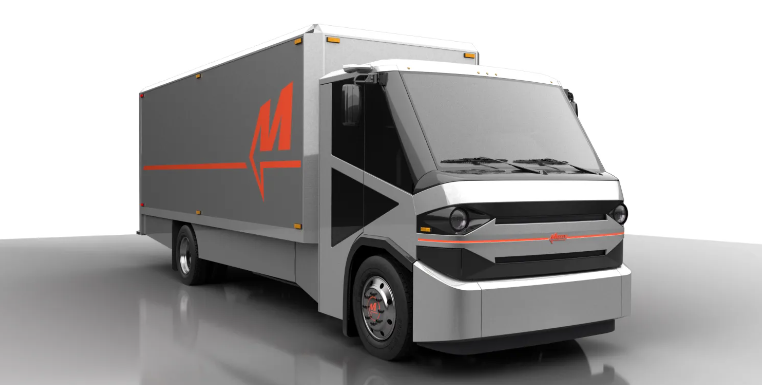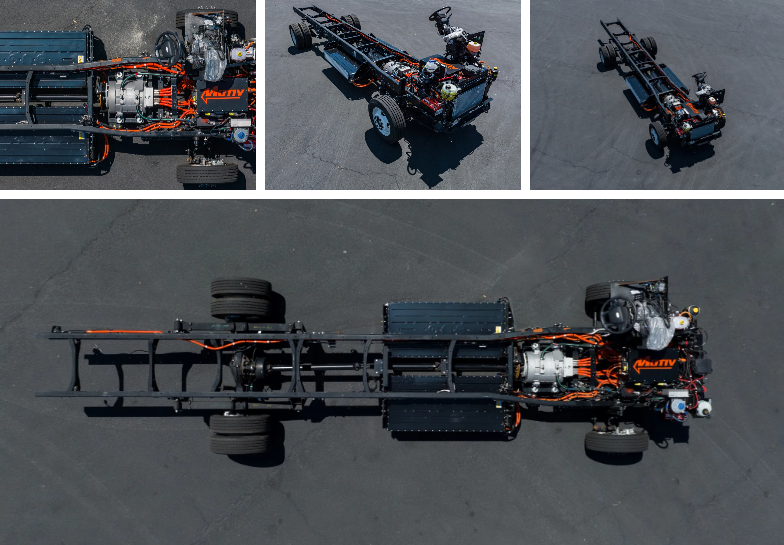Electric trucking is a hot sector right now due to new rules adopted by California requiring rapid electrification of commercial fleets. These rules mean about 20,000 medium-duty electric trucks will need to be deployed by the end of 2024.
And Motiv hopes that it can have the Argo in production by late next year and hopes to provide possibly a thousand of those vehicles (an optimistic number, given that it currently only has 180 vehicles deployed in the field).
Motiv has provided trucks to Cintas, Bimbo Bakeries, and Purolator but is hoping to double its total delivered fleet this year and then scale up quickly to match the tsunami of demand it sees coming in 2024 and 2025.

Motiv says the experience and feedback it has collected through its years of providing EVs to its customers has helped it design the Argo to better fit real-world needs. Its cab features a command seating position (helping to bring the battery forward, taking some weight off the rear axle) but has taken some lessons from the step van world and included stairs rather than a ladder for easier entry and exit.
Argo will be built on Motiv’s next-generation platform, which it announced in April. The platform uses lithium iron phosphate (LFP) batteries, which are cheaper and more durable than lithium-ion, but don’t offer quite as much energy density.
But even with a relatively less dense LFP battery, Motiv says the Argo will offer 150 miles of range with its base 158 kWh battery, even when loaded to its max 26,000 lb gross vehicle weight rating (GVWR). There will be an additional three-module 237 kWh option available, which will give over 200 miles of range.
Motiv says its powertrain, co-developed with Nidec, makes up to 1,770 lb-ft of torque, which is as much as a Class 8 diesel truck, but in a Class 4-6 package. This gives it better performance than any gasoline-powered equivalent when fully loaded (4-6 tons).

In the face of new regulations and to fulfill ESG commitments, companies are scrambling to make plans, and the cost of trucks and availability of charging are two major questions for fleets as they get ready for electrification.
Motiv thinks the Argo offers better answers to these questions for many fleets. It hasn’t yet announced a price for the Argo but wants to keep it under $250,000 (before a commercial EV tax credit of up to $40,000) – which it says is lower than competitors like the Freightliner eM2.
This, of course, comes alongside much lower operational costs and higher uptime than diesel trucks, and Motiv says Argo will have a simpler powertrain with less cabling and fewer parts than its electric competition as well, leading to potentially lower maintenance costs.
Argo will also use a 400-volt DC charging system capable of 65 kW, differing from some of its competitors, which are going with 800-volt systems. Motiv thinks the lower voltage will offer an advantage in that it can interface with existing DC chargers from the light-duty world, which should make charging easier. For AC charging, it has a 19.2 kW onboard charger. Argo will likely use the NACS connector, but Motiv hasn’t decided yet since things are changing rapidly on that front.
That DC charge rate seems low compared to light-duty vehicles, but the fleets that Motiv services tend to have defined routes and long park times at the end of the day. It figures most customers will charge overnight on an 80-amp charger and recommends that as the optimal charging solution.
Argo is available for pre-order now, but prototypes won’t be out until early 2024, with vehicle deliveries in late 2024. You can find out more about the Argo on Motiv’s website.